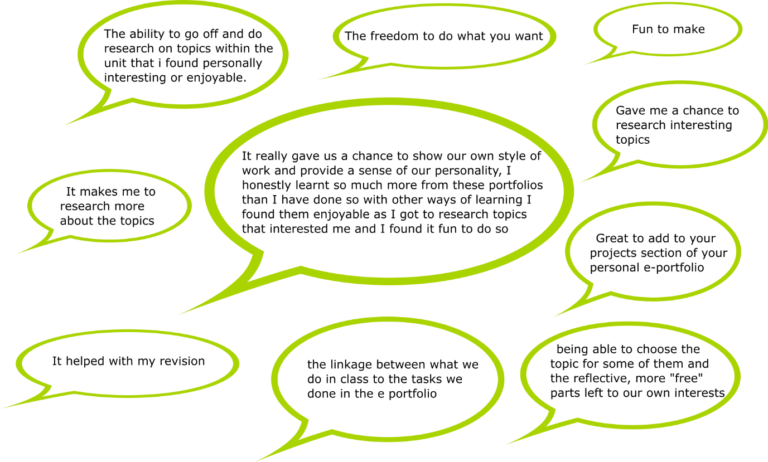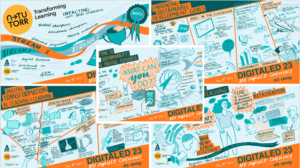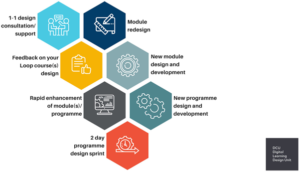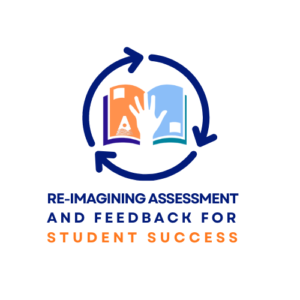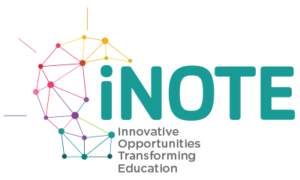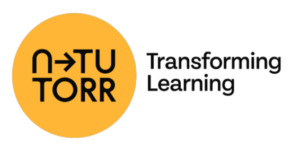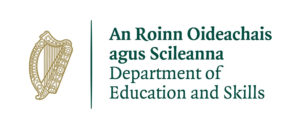E-portfolios are digital representations of students’ work along with reflections on their learning (Reynolds et al, 2014). They offer students many opportunities to demonstrate and reflect on their learning through a variety of media. They enable students to make connections, achieve greater success, and improve both their leadership skills and future employability (Eynon & Gambino, 2017; Haave, 2016; Yueh, 2016; Weber, 2018).
This post gives a brief overview of an e-portfolio assessment in Human Physiology – a first-year module on the biomedical engineering programme.
The e-portfolio consisted of eight scaffolded tasks. Tasks ranged from students stating their goals in the module to researching engineering solutions to various diseases. There were also some self and peer review tasks. Students were provided with a basic template for each task but were allowed to deviate from that template.

A grading rubric was provided for each task, which detailed expectations in several areas, including content, reflection, and portfolio design. Audio and written feedback was provided to each student after each task.
The outputs created by students for the e-portfolio demonstrate the diversity present in the class. Students used a variety of methods to display their portfolios, including Prezi, and Publisher. Some students opted to scan and upload hand drawings.
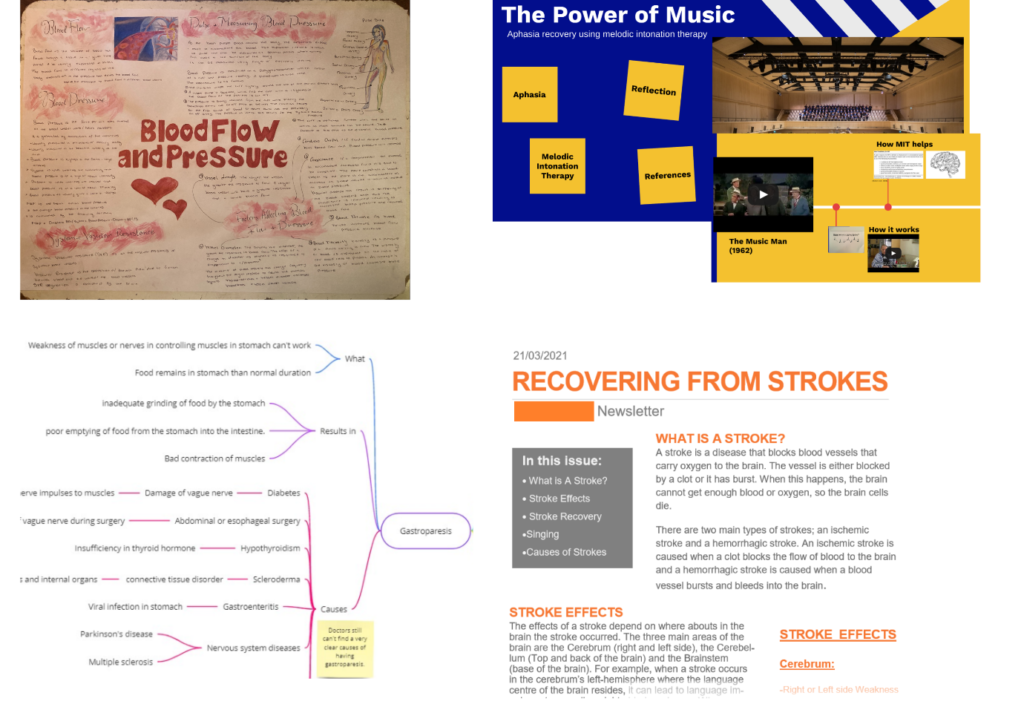
Several students produced audio to reflect on their outputs.
Memes also proved a popular means of reflection.

Twenty-four students out of a class of 39 students responded to an anonymous survey on their e-portfolio experiences. 91% of students indicated that the e-portfolio tasks allowed them to research physiology topics that interested them. 96% of students indicated that the tasks allowed them to be creative and it helped with revision for other assignments. All students agreed the tasks allowed them to demonstrate their knowledge, while 91% agreed that reflecting on the tasks furthered their learning. Only a couple of responders thought that the workload for the e-portfolio was too much.
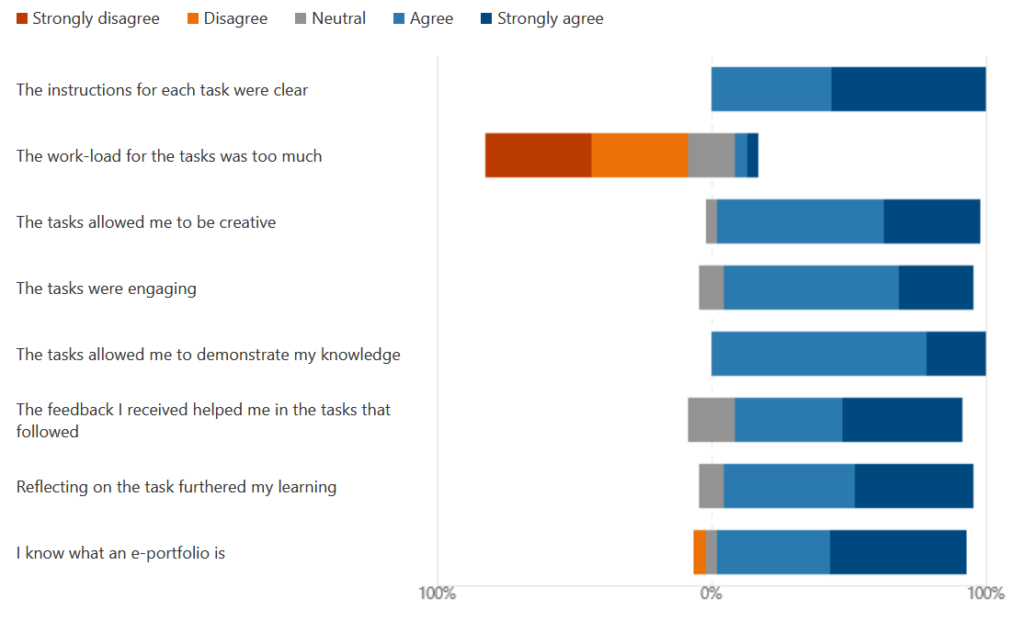
What came through the most in the student comments was the enthusiasm they had for researching topics of their choosing and communicating them in a way that was personal to them.
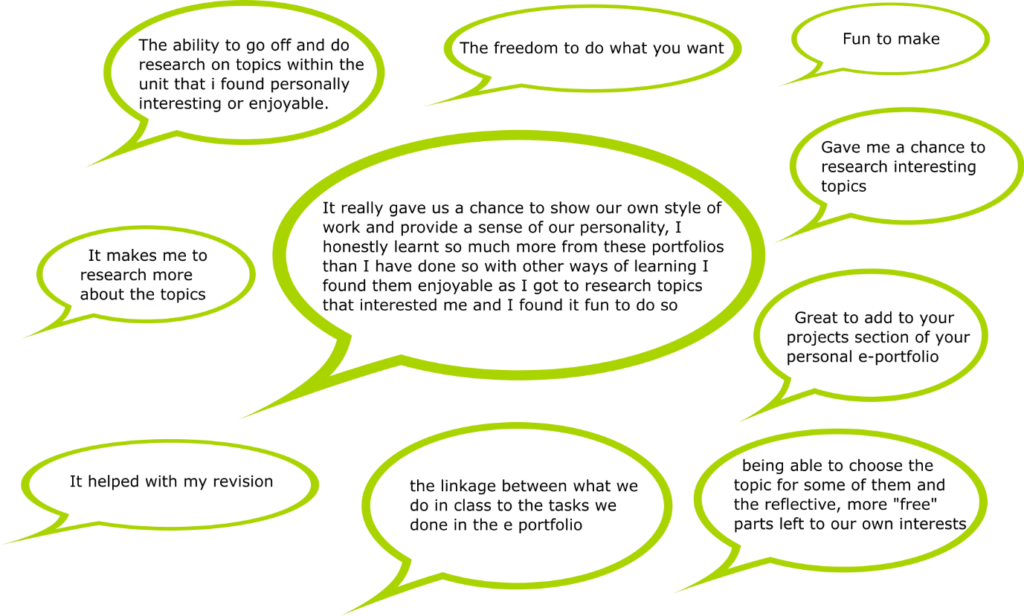
On the technical side, students developed their e-portfolios on OneNote. While most of the students had not used OneNote before, no one found it difficult to use. Almost all indicated their OneNote proficiency improved throughout the year. Students commented on the ease of accessing their e-portfolio on OneNote. For me, the only drawback of using OneNote was the awkward process of allowing students to share pages for peer-reviewing.
Overall, the e-portfolio assessment was positively received by students. It allowed them to demonstrate their knowledge in a creative way that reflected their personality. I certainly enjoyed reviewing them much more than a final exam!
References
Eynon, B., & Gambino, L. M. (2017). High-impact ePortfolio practice: A catalyst for student, faculty, and institutional learning. Stylus Publishing, LLC.
Haave, N. (2016). E-Portfolios Rescue Biology Students from a Poorer Final Exam Result. Bioscene, 42(1), 8-15.
Reynolds, C., & Patton, J. (2015). Leveraging the ePortfolio for integrative learning: A faculty guide to classroom practices for transforming student learning. Stylus Publishing, LLC.
Weber, K. (2018). Employer Perceptions of an Engineering Student’s Electronic Portfolio. IJeP, 8(1), 57-71.
Yueh, H. (2013). Engineering students’ perceptions of and reflections on portfolio practice in leadership development. Int J Eng Educ, 29(1), 99-106.

